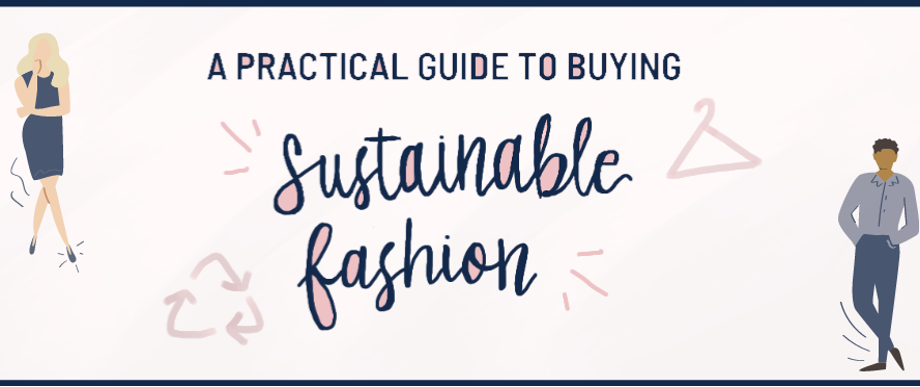Author: Wayne Chien
The BRB Bottomline
The term sustainable has been growing exponentially in the fashion industry as consumers become more conscious of how their clothes are made. Nowadays consumers don’t just want to have the trendiest styles, they also want to know that they’re not destroying the environment along the way. This article won’t focus on all of the environmental damage caused by the textile and fashion industry but will rather focus on what individual consumers can do to improve their own shopping habits from the bottom up. By being more conscientious of our habits when it comes to fashion, we can reshape the supply side of the fashion industry while also saving the environment on a personal level.
Economic Realities
A common issue consumers find when trying to shop sustainability is cost. Clothing made in countries with fewer environmental and worker protections are often cheaper and mass produced, while sustainable brands tend to be more expensive and harder to source. Although finding brands with good sustainability practices and buying higher quality items are important parts of being a more conscientious consumer, we should take into consideration the fact people have different economic realities. Sustainability shouldn’t just be about buying high-end brands with feel-good marketing campaigns, rather it should be about how we integrate fashion consumption into our lifestyle. In understanding how to make the most of the resources available to us, we can be fashionable and sustainable without breaking the bank.
Utility Over Time
One method to judge whether or not a certain purchase is going to be sustainable is by looking at how long it’s going to be used for. A jacket made with sustainably sourced materials is still going to have a large environmental impact if it’s sitting in a closet and only being worn once in a blue moon. Comparably, clothes purchased from a fast fashion retailer, such as H&M, can still provide great value and utility provided that you’re getting a lot of uses out of it. By wearing clothes for longer and buying less often, we can save money and reduce the amount of waste we produce while keeping up with the latest fashion trends. To calculate the true cost of something we buy, one should take the total price of the piece and divide it by the amount of times that they can expect to wear it. There are a couple of cost per wear calculators online which makes this even easier. The goal of this exercise is to try and reduce the cost per wear of your wardrobe, which will encourage you to shop less and be more creative with stylistic choices.
In a similar vein, shopping from second hand retail sites such as Grailed as well as thrift stores such as Goodwill and The Salvation Army will multiply this effect. Not only are you going to save money on by buying quality used clothes, you’re also extending the life of a garment that no longer fits the style of the previous owner. Thrifting is a practice that not only promotes sustainability but is also beneficial as a resource to improve the community. Many stores such as the ones mentioned above take donations and spend their resources on providing social services to those in need, which for many feels better than supporting a profit driven corporation.
The Tailor Is Your Friend
Although no longer as popular in the United States, tailoring and sewing your own clothes has long been a way to reuse and refashion old clothing. In China, during much of the Mao era, sewing machines along with wrist watches and bicycles were considered to be one of the Three Great Things, as it allowed people to repair damaged garments and pass down cloths through different generations and family members. With the rise of cheap manufactured and ready to wear clothing, the tailoring industry has been in-decline, but this doesn’t mean we should abandon the practice to bespoke suit-makers in Savile Row, rather we should come to appreciate what our neighborhood tailor can do for us in terms of improving the longevity of our clothes.
Instead of throwing away a garment you’ve grown out of or seems a bit worn, a tailor can hem the piece to make it fit better or to update its style. They can also recommend putting different types of patches or collars on your shirts, renewing its life and updating its fit to create the look you want to achieve. Though tailoring might seem expensive, the cost is often less than buying an entirely new piece of clothing and allows you to make personal customizations while also supporting local businesses.
Take-Home Points
Though we cannot change the practices of the fashion industry overnight, by being more conscientious consumers we can take pride in the fact that we’re reshaping the life cycles of our clothes. Sustainability is a lifestyle choice and should be accessible to everyone, not just the wealthy who are able to afford premium and expensive clothing.


The impact of our actions and lifestyles on our environment must be considered and should influence our looks. Great insight with this piece here.
Hey very nice site!! Guy .. Excellent .. Amazing .. I’ll bookmark your website and take the feeds I’m glad to find so many helpful information right here in the post, we’d like develop extra techniques on this regard, thanks for sharing. . . . . .
There are some attention-grabbing closing dates on this article but I don抰 know if I see all of them center to heart. There’s some validity however I will take maintain opinion till I look into it further. Good article , thanks and we want more! Added to FeedBurner as nicely
Very Awesome and Help full Article. It really helps me. Thanks for sharing this.